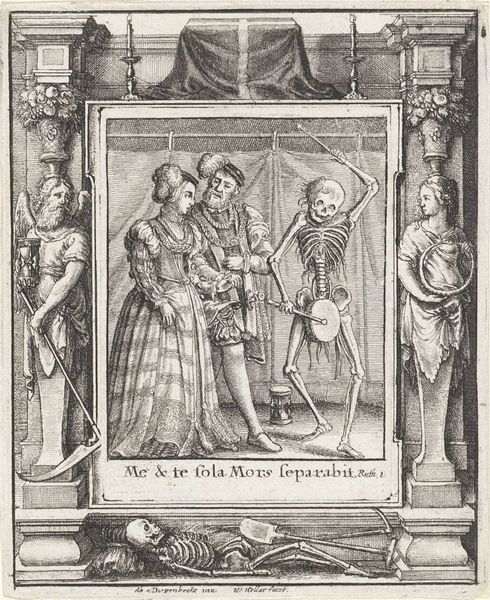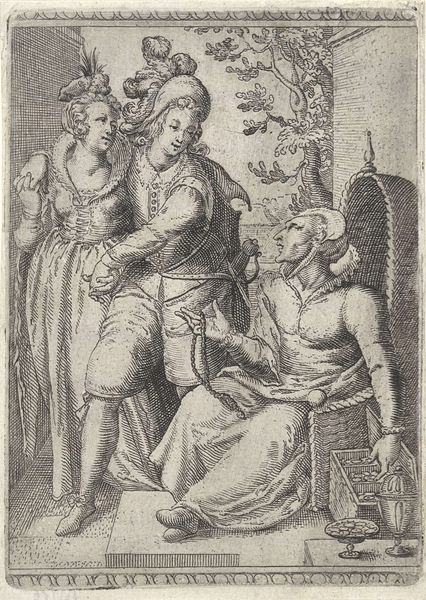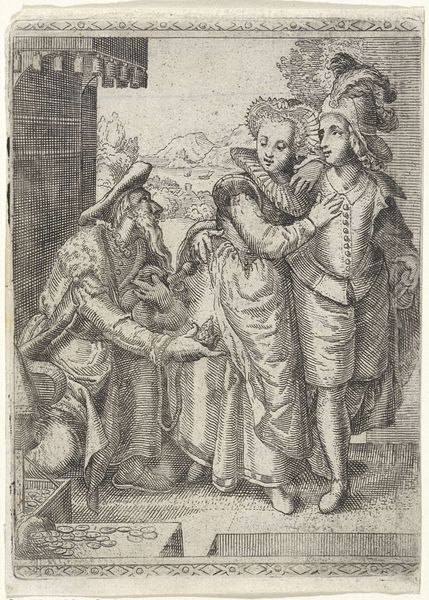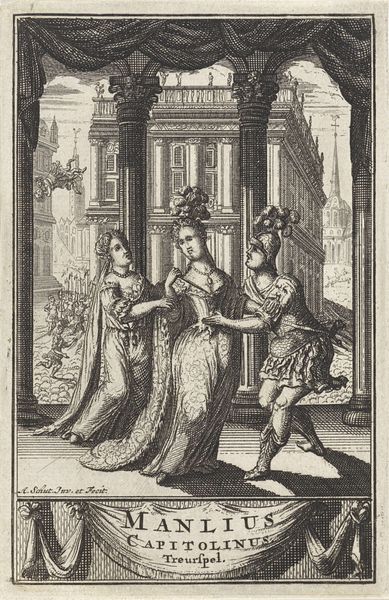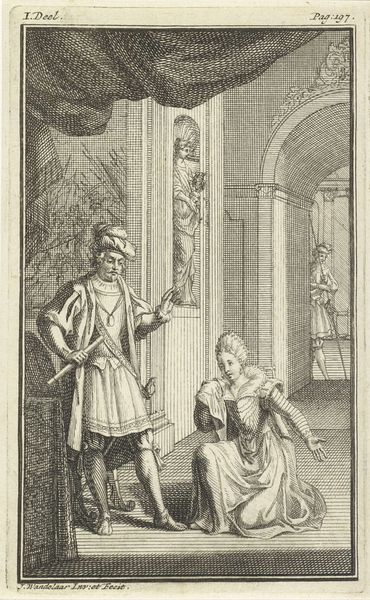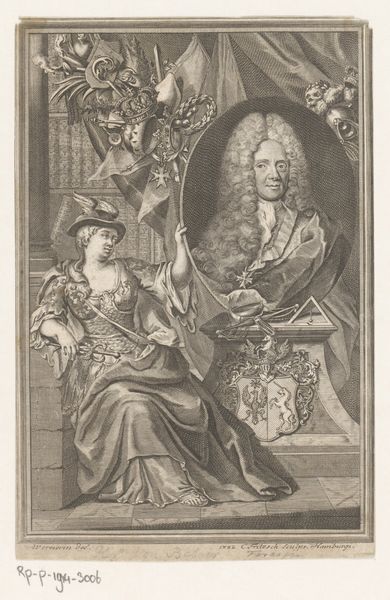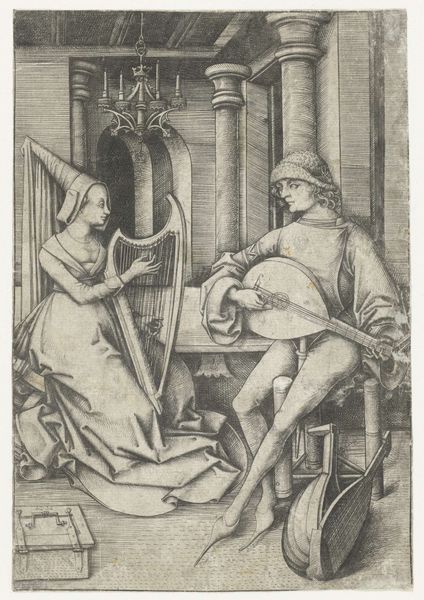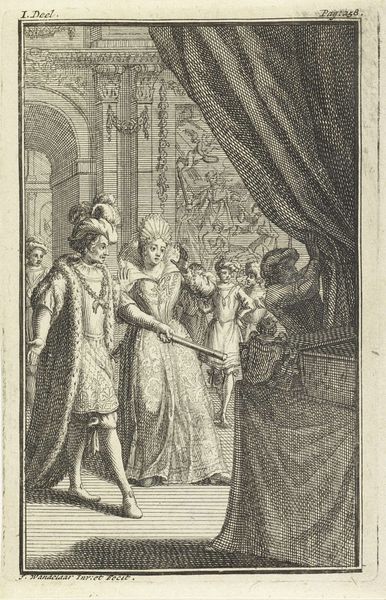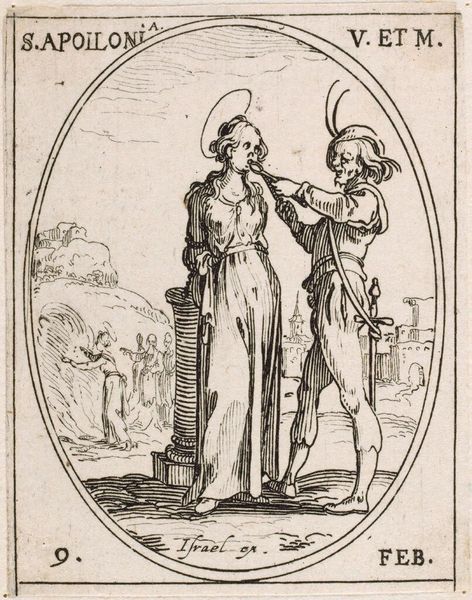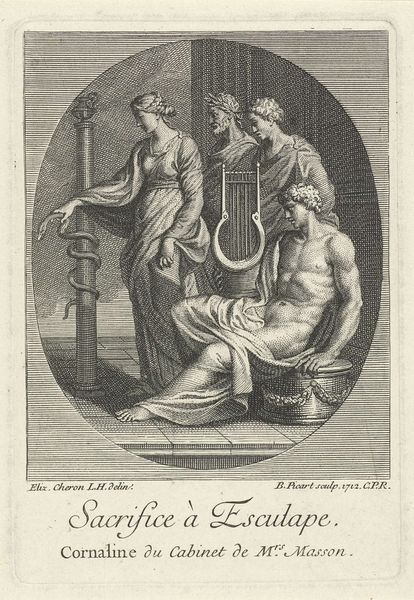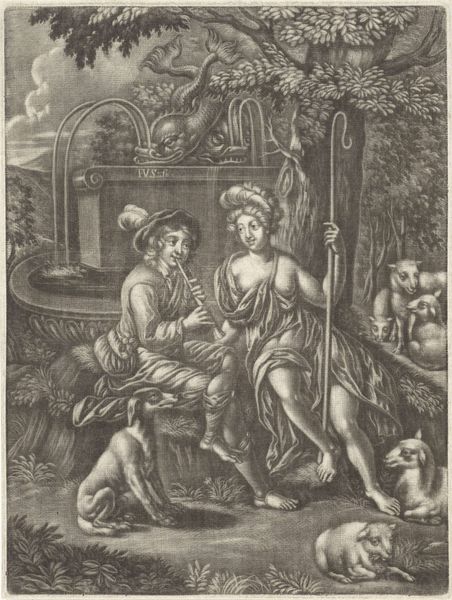
drawing, print, ink, engraving
#
portrait
#
drawing
#
narrative-art
#
baroque
#
pen drawing
# print
#
caricature
#
old engraving style
#
caricature
#
figuration
#
ink
#
line
#
genre-painting
#
engraving
Dimensions: height 130 mm, width 70 mm
Copyright: Rijks Museum: Open Domain
Curator: Welcome. Today, we’re looking at "Le Sicilien," an engraving dating back to 1713 by Gilbert Schoute. Editor: My first impression is a feeling of contained chaos. It’s like a stage set filled with actors who are each performing their roles, but without any clear direction. Curator: It is indeed highly theatrical. Schoute's masterful use of line and the etching technique creates remarkable tonal variation for what is essentially a black-and-white composition. Note how the precise arrangement of lines defines the textures and intricate details of each figure's attire and setting. Editor: And what narratives do those costumes and setting imply? The subjects feel pulled from different eras and social classes, and they almost clash in a way that reveals rigid societal boundaries and the performances people put on. It seems like an absurd satire of Baroque aristocratic culture. Curator: You rightly point to the element of satire. Consider the portraits adorning the wall. They suggest established traditions while the figures in the foreground enact a contemporary drama. This interplay generates tension within the defined pictorial space. Editor: That tension speaks volumes about power dynamics in play, perhaps critiquing male gaze and its objectification of women. The title “Le Sicilien,” alongside the depiction of the male figures in their positions of authority, brings forth broader socio-political implications concerning colonization and the control and domination over particular groups and territories. Curator: I appreciate your interpretation of colonial power relations, though, I must admit that its application might somewhat force itself onto the artwork. Nonetheless, the work's genius lies in the technical details—in the use of hatching, stippling and line to construct depth. These considerations are just as critical in grasping Schoute's intention as are the symbols within the image. Editor: Agreed; this interplay makes unpacking the imagery all the more dynamic. Understanding technique adds nuance and highlights the socio-historical contexts to broaden an analysis of class, gender, and culture as it relates to the construction of power and identities in the Baroque era. Curator: Indeed, Schoute's strategic play of shadows and lights gives weight and significance to figures, ultimately drawing viewers to decipher underlying narratives that resonate through technique and subject matter. Editor: Ultimately, analyzing these narratives gives us perspective to the complexities embedded in the representation of cultural encounters, class dynamics, and the gaze. These details are what makes "Le Sicilien" such a timeless piece.
Comments
No comments
Be the first to comment and join the conversation on the ultimate creative platform.

